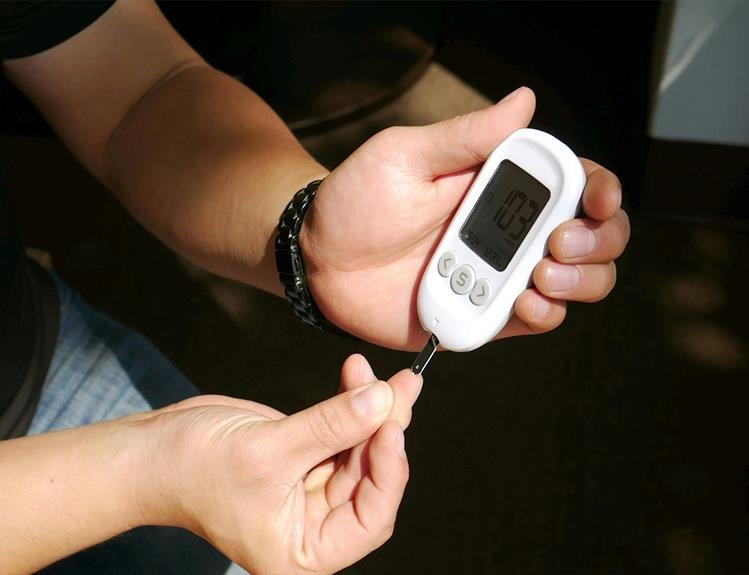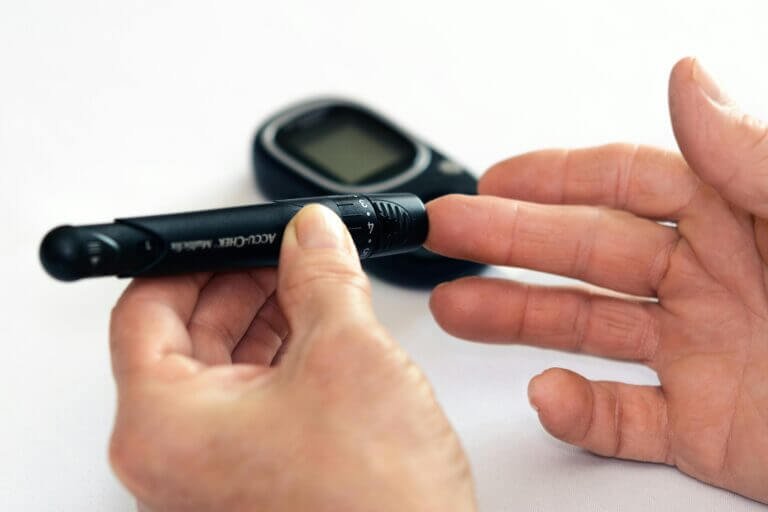Understanding Insulin: A Guide for Individuals with Diabetes

Diabetes affects millions of people worldwide, with an estimated 463 million adults living with the condition in 2019. This chronic disease can significantly impact an individual’s quality of life, as it requires constant management and monitoring to prevent serious complications. One of the most crucial aspects of managing diabetes is understanding insulin and its role in the body. Insulin is a hormone produced by the pancreas that plays a crucial role in regulating blood sugar levels. For individuals with diabetes, this hormone is either not produced in sufficient amounts or not used effectively by the body. As a result, they must rely on external insulin sources to maintain their blood sugar levels. However, navigating the world of insulin can be overwhelming, with different types, dosages, and methods of administration. This guide aims to provide a comprehensive understanding of insulin to individuals with diabetes, helping them make informed decisions about their treatment and improve their overall well-being.
How Insulin Regulates Blood Sugar: Explaining the process
Insulin, a hormone produced by the pancreas, plays a crucial role in regulating blood sugar levels in the body. When we consume food, especially carbohydrates, our blood sugar levels rise. In response, the pancreas releases insulin into the bloodstream. Insulin acts as a key that unlocks our body’s cells, allowing glucose (sugar) to enter and be used as energy. Simultaneously, insulin signals the liver to store excess glucose as glycogen for later use. This process helps to maintain stable blood sugar levels by preventing them from rising too high. Conversely, if blood sugar levels drop too low, such as during periods of fasting or intense physical activity, the pancreas reduces insulin production, allowing stored glycogen to be converted back into glucose and released into the bloodstream. This delicate balance of insulin release and glucose uptake is essential for individuals with diabetes to manage their blood sugar levels effectively.for more articles on diabetes click here
Types of Insulin and Their Uses: Understand the different options
In order to effectively manage diabetes, it is important for individuals to understand the different types of insulin and their uses. There are several types of insulin available, each with varying onset, peak, and duration of action. Rapid-acting insulin, such as insulin lispro or insulin aspart, begins working within 15 minutes and reaches its peak effect within 1-2 hours, making it suitable for controlling blood sugar spikes after meals. Short-acting insulin, such as regular insulin, takes effect within 30 minutes and peaks within 2-4 hours, providing coverage for a longer duration. Intermediate-acting insulin, like NPH insulin, has a delayed onset of action, typically taking effect within 1-3 hours and peaking after 4-8 hours. Long-acting insulin, such as insulin glargine or insulin detemir, has a more consistent effect over a prolonged period, often lasting up to 24 hours. Combination insulins, which contain a mixture of rapid- or short-acting insulin with intermediate- or long-acting insulin, offer a convenient option for individuals requiring both basal and mealtime insulin coverage. It is important for individuals with diabetes to work closely with their healthcare provider to determine the most appropriate type(s) of insulin and dosing regimen to effectively manage their blood sugar levels.
Insulin Administration Techniques: Tips for proper injections
Proper insulin administration techniques are crucial for individuals with diabetes to effectively manage their condition. When administering insulin injections, it is important to follow a few key tips to ensure accurate dosing and minimize discomfort. Firstly, it is essential to thoroughly wash hands with soap and water before handling insulin and preparing for injection. This helps to reduce the risk of infection. Secondly, it is important to rotate injection sites to prevent the development of lumps or skin changes. Common injection sites include the abdomen, thigh, upper arm, and buttocks. Regularly changing injection sites helps to maintain the absorption of insulin and prevent lipohypertrophy, a condition characterized by thickened fatty tissue at injection sites. Additionally, using a new needle for each injection helps to ensure proper needle sharpness and reduce the risk of infection. Lastly, it is crucial to inject the insulin at the correct angle and depth. Insulin injections should be administered at a 90-degree angle into the fatty tissue beneath the skin, unless specifically instructed otherwise by a healthcare professional. By adhering to these insulin administration techniques, individuals with diabetes can confidently and effectively manage their insulin therapy to maintain optimal blood sugar control.
Managing Insulin Dosage: Finding your individual needs
When it comes to managing insulin dosage, it is essential for individuals with diabetes to find their individual needs. Each person’s insulin requirements can vary based on factors such as age, weight, activity level, and overall health. To determine the appropriate dosage, it is important to work closely with a healthcare professional who specializes in diabetes management. This may involve regular blood glucose monitoring, keeping track of carbohydrate intake, and adjusting insulin doses accordingly. It is crucial to communicate any changes in lifestyle or health status to ensure that the insulin dosage remains accurate and effective. Finding the right balance of insulin dosage is key to maintaining stable blood sugar levels and effectively managing diabetes. Remember, personalized care and guidance from healthcare professionals are vital in this process.
Potential Side Effects of Insulin: Understanding the risks
Insulin is a crucial medication for individuals with diabetes, helping to regulate blood sugar levels and prevent complications. However, it is important to be aware of the potential side effects that can accompany its use. While the majority of people experience little to no adverse effects, some individuals may experience symptoms such as hypoglycemia, weight gain, and injection site reactions. Hypoglycemia, or low blood sugar, can occur if too much insulin is administered or if there is a mismatch between insulin dosage and carbohydrate intake. This can lead to symptoms like dizziness, sweating, and confusion. Weight gain is another possible side effect, particularly if insulin doses are not carefully managed or if the individual experiences an increase in appetite. In some cases, individuals may also experience redness, swelling, or irritation at the injection site. It is important to discuss any concerns or symptoms with a healthcare professional to ensure appropriate adjustments to insulin dosage or treatment plan. With proper monitoring and communication, the benefits of insulin therapy can outweigh the potential side effects, enabling individuals with diabetes to effectively manage their condition and lead healthy lives.
Proper Storage and Handling: Keeping your insulin effective
Proper storage and handling of insulin is essential to maintain its effectiveness and ensure its safe use. Insulin is a delicate medication that can lose its potency if not stored and handled correctly. To keep your insulin effective, it is recommended to store it in the refrigerator at temperatures between 36°F and 46°F (2°C and 8°C). Avoid freezing the insulin as it can cause it to become ineffective. Additionally, it is important to protect insulin from excessive heat and direct sunlight, as exposure to high temperatures can also degrade its potency. When traveling, use a cool pack or insulated bag to keep the insulin at the appropriate temperature. Insulin should also be kept away from extreme temperatures, such as in a hot car or near a heater. Always check the expiration date on your insulin and discard any expired or damaged vials or pens. Furthermore, proper handling includes ensuring that you wash your hands thoroughly before administering insulin to prevent contamination. By taking these steps to properly store and handle your insulin, you can maximize its effectiveness and maintain optimal diabetes management.
Insulin and Exercise: Balancing blood sugar levels
Regular physical activity is highly beneficial for individuals with diabetes as it helps to balance blood sugar levels and improve insulin sensitivity. When you engage in exercise, your muscles require more energy, which is primarily sourced from glucose. As a result, exercise can lower blood sugar levels by increasing glucose uptake by the muscles, reducing the need for insulin. However, it is important to closely monitor your blood sugar levels before, during, and after exercise, as they can fluctuate unpredictably. It is recommended to check your blood sugar levels before starting any physical activity and, if needed, consume a snack to ensure that your blood sugar is within a safe range. Additionally, it is essential to communicate with your healthcare provider to determine the appropriate type, intensity, and duration of exercise that suits your individual needs and medical condition. Regular physical activity, combined with proper insulin management, can greatly contribute to achieving optimal blood sugar control and overall health.
Consult Your Doctor: Important considerations and personalized advice
It is crucial for individuals with diabetes to consult their doctor for important considerations and personalized advice regarding their insulin management and overall health. While this guide provides valuable information about understanding insulin, every person’s medical condition and needs are unique. Your doctor can provide personalized recommendations tailored to your specific circumstances. They can assess your current health status, review your medical history, and consider any other underlying health conditions or medications you may be taking. Your doctor will be able to guide you on the appropriate dosage and administration of insulin, as well as help you establish a comprehensive diabetes management plan that includes regular monitoring of blood sugar levels, dietary adjustments, and exercise routines. They can also address any concerns or questions you may have, ensuring that your insulin therapy is effectively supporting your overall well-being. Always remember that your doctor is your trusted partner in managing your diabetes, and their expertise and guidance are invaluable in achieving optimal health outcomes.
In conclusion, understanding insulin is crucial for individuals with diabetes as it is an essential hormone that helps regulate blood sugar levels. By learning about the different types of insulin, their functions, and how to properly administer it, individuals can effectively manage their diabetes and improve their overall health. It is important for individuals to work closely with their healthcare team to determine the best insulin regimen for their specific needs. With proper knowledge and guidance, individuals can successfully incorporate insulin into their diabetes management plan and live a healthy and fulfilling life.
FAQ
What is the role of insulin in the body and how does it affect blood sugar levels in individuals with diabetes?
Insulin is a hormone produced by the pancreas that helps regulate blood sugar levels by facilitating the uptake of glucose into cells for energy. In individuals with diabetes, insulin production or function is impaired, leading to high blood sugar levels. In Type 1 diabetes, the body doesn’t produce insulin, while in Type 2 diabetes, cells become resistant to insulin. This results in elevated blood sugar levels, causing various complications. Proper management through medication, diet, and lifestyle changes is crucial for individuals with diabetes to control their blood sugar levels and prevent long-term health issues.
How does insulin therapy help individuals with diabetes manage their condition and prevent complications?
Insulin therapy helps individuals with diabetes manage their condition by regulating blood sugar levels, which in turn prevents complications such as nerve damage, kidney failure, and cardiovascular issues. By mimicking the action of the body’s natural insulin, this therapy enables cells to absorb glucose for energy, reducing the risk of hyperglycemia and its associated health problems. Regular insulin administration is essential for balancing glucose levels and preventing long-term complications, making it a critical component of diabetes management.
What are the different types of insulin available for individuals with diabetes, and how do they differ in terms of onset, peak, and duration of action?
There are four main types of insulin – rapid-acting, short-acting, intermediate-acting, and long-acting. Rapid-acting insulins like lispro and aspart have a quick onset (15 minutes), peak in 1-2 hours, and last for 3-4 hours. Short-acting insulins like regular have an onset of 30 minutes, peak in 2-4 hours, and last for 5-8 hours. Intermediate-acting insulins like NPH have an onset of 1-2 hours, peak in 6-14 hours, and last for 16-24 hours. Long-acting insulins like glargine and detemir have a slow onset, peakless action, and can last up to 24 hours or longer.
What are the signs and symptoms of insulin resistance, and how can individuals with diabetes address this issue to improve their blood sugar control?
Signs and symptoms of insulin resistance include fatigue, weight gain, high blood sugar levels, and increased hunger. To address this issue and improve blood sugar control, individuals with diabetes can focus on maintaining a healthy weight through diet and exercise, monitoring blood sugar levels regularly, taking prescribed medications as directed, and working closely with their healthcare team to adjust treatment plans as needed. Lifestyle changes such as incorporating physical activity and adopting a balanced diet can also help improve insulin sensitivity and overall blood sugar management.
How can individuals with diabetes monitor their insulin levels and adjust their insulin doses to achieve optimal blood sugar control?
Individuals with diabetes can monitor their insulin levels by regularly checking their blood sugar levels using a glucose meter, continuous glucose monitoring system, or flash glucose monitoring device. Based on these readings and in consultation with their healthcare provider, they can adjust their insulin doses by tracking their carbohydrate intake, physical activity level, and other factors that affect blood sugar levels. Regular communication with a healthcare provider is essential to ensure that insulin dosages are optimized for each individual’s needs and to achieve optimal blood sugar control.


